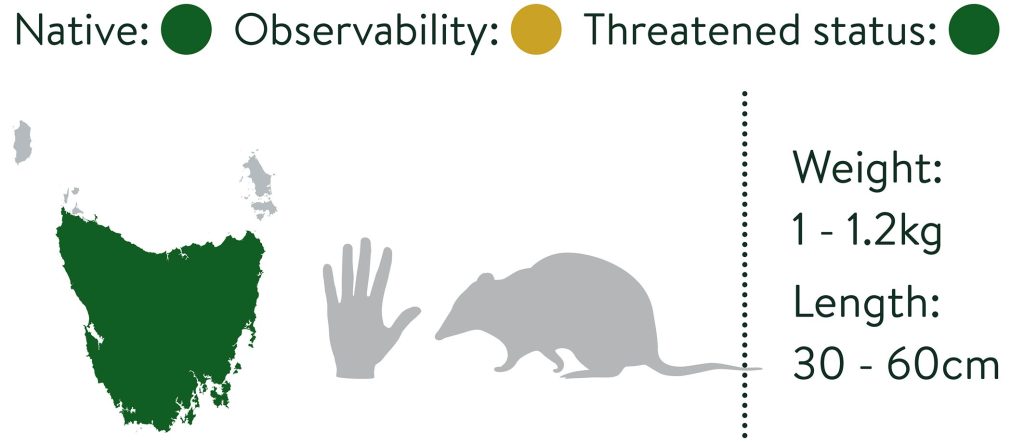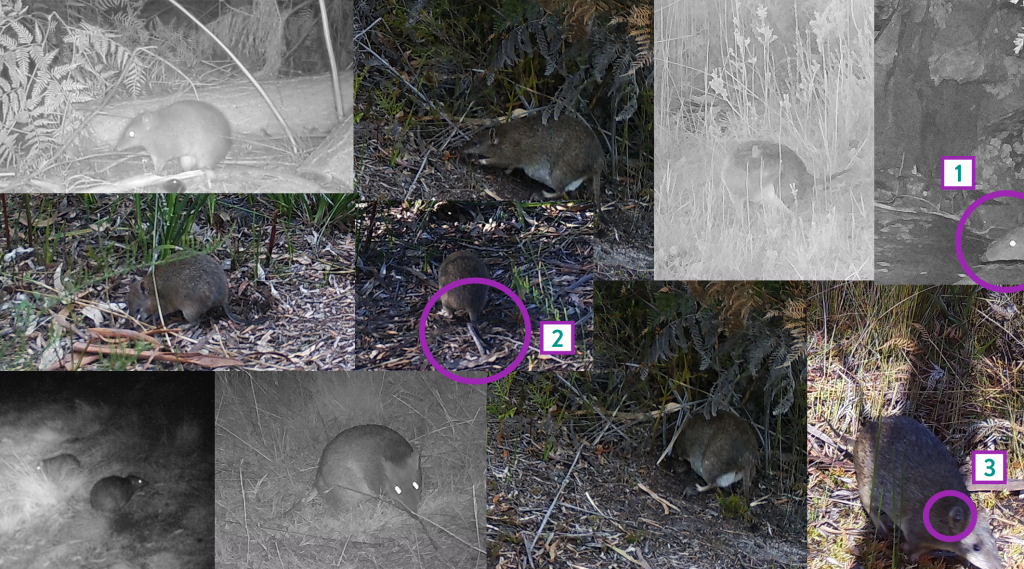Peramelidae | Isoodon obesulus
The distribution of SBBs has shrunk dramatically since European colonisation. On the Australian mainland, the southern and eastern subspecies are Endangered.

Lifestyle
SBBs are mostly nocturnal. They make a nest of shredded grasses in a shallow depression amongst other dense vegetation to rest in during the day. Young are born from July to February and leave the pouch after around 50 days. Females have a litter of 2 or 3 young on average but may have up to 4 litters in a year. If a bandicute is born early in the year, it could reach maturity and breed in the same year as its birth! SBBs can live up to 4 years.

Key identifying features
Long, conical muzzle (1). Tail is thin and much shorter than the body (25-30% of head and body length, 2). Tail is a consistent width along its length. Short, rounded ears (3). Coat is grey-brown with cream-yellow underbelly and white beneath the tail. Rear-opening pouch.
Similar species
Eastern barred bandicoot – has striped coat; larger and more pointed ears; longer muzzle.
Long-nosed potoroo – Muzzle is more sculpted (not symmetrical); longer tail that may have white tip; longer rear limbs causing a more hunched stance.
Habitats
Most habitats including parks & gardens, but abundant in dry forests, shrubland and heathland with well-drained soils. Requires dense ground cover or shrubs for nesting and protection.
Diet
Generalist omnivore. Invertebrates, fungi, roots, grasses, seeds & ferns. A penchant for crickets and blackberries. Bandisnoots ‘nose’ the ground and dig in search of food creating conical diggings up to 8cm deep.
Threats
Habitat clearance. Drought. Predation by cats and dogs.
